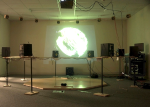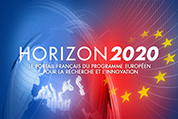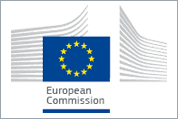Dissemination

WAVES topics, from the study of earthquakes to the medical applications of ultrasound, affect our society at all scales.
The Work-Package 5 is entirely dedicated to dissemination with the aim of guaranteeing that WAVES activities will have the appropriate scientific and societal impact worldwide. To this end, the Communication and dissemination of results will focus on the following two different aspects:
- Communication and public engagement
- Wide-audience outreach:
WAVES dissemination aims at communicating to a wide audience, fostering the societal applications of project results, facilitating the exchange of information and the interaction with society at large.
Since physical acoustic experimentation is central to WAVES, the network will demonstrate its finding using sound.
The Seismic Sound Lab at Columbia University and the science-art team based at UOslo will make this possible via auditory display and sound installation that will benefit from and complements the seismology-acoustics synergy at the core of WAVES research.
It emphasizes simultaneous visualization and sonification of seismic data for multi-sensory perception, e.g. integrating sonification of seismic data with visualizations of numerical simulations. The sound/vision combination makes the physical meaning of the sound clear and accessible to listeners of all backgrounds.
The auditory display team will design an interactive exhibits based on WAVES research with the idea of illustrating in sound different phenomena such as time reversal, intrinsic attenuation, scattering and earthquakes source mechanisms.
- Web-based outreach: The WAVES website and a WAVE newsletter will guarantee a large dissemination of the results, by providing a non-specialist overview of the project’s objectives and results meant for the general public.
- Scientific popularization of WAVES research is planned trough both print and audiovisual media. The network plan to edit a special issue, focused on WAVS topics, for a scientific popularization journal, and will make contact with documentary film makers and journalists to produce a mini TV documentary series about WAVES research.
- Annual open days at WAVES laboratory will provide the general public access to WAVES network research environment.This will aslo provide a great opportunity for WAVES ESRs to learn to popularize their science!
- Gender equality awareness:
WAVES network will raise public awareness on gender equality in academia and the industry, in research disciplines characterized by an overwhelmingly male population.
- Dissemination of the research results
- Scientific publications and conferences:
The network partners have a strong record for publication in the best publication outlets in geophysics, acoustic and related disciplines, and will continue to publish results from the project in such journals.
All ESRs will be strongly encouraged to actively participate in and organize dedicated sessions at international conferences.
Opening WAVES annual workshops and short-course to external participants will enhance networking possibilities for young scientists and, simultaneously, public dissemination in various format.
- Project partners will participate in related summer schools and conferences by providing lectures and tutorials on topics related to the project.
- Local dissemination:
ESRs will organize bi-annual “WAVES aperitif” will organized at their respective host institutions to spread information about WAVES research and favor informal scientific interaction with students outside of the project.
Key Facts
- Coordinated by Université Pierre et Marie Curie
- 15 participating partners
- 6 European countries and the USA
- 15 trained fellows
- Project budget: 3 227 952.96€
- Project duration: 4 years
- WAVES is a European project funded by the European Union’s Horizon 2020 research and innovation programme under the Marie Slodowska-Curie grant agreement n° 641943.
Contact
Coordinator:
Lapo Boschi (lapo.boschi @ upmc.fr)
Project Manager
Fanny Schultz (fanny.schultz @ sorbonne-universite.fr)



